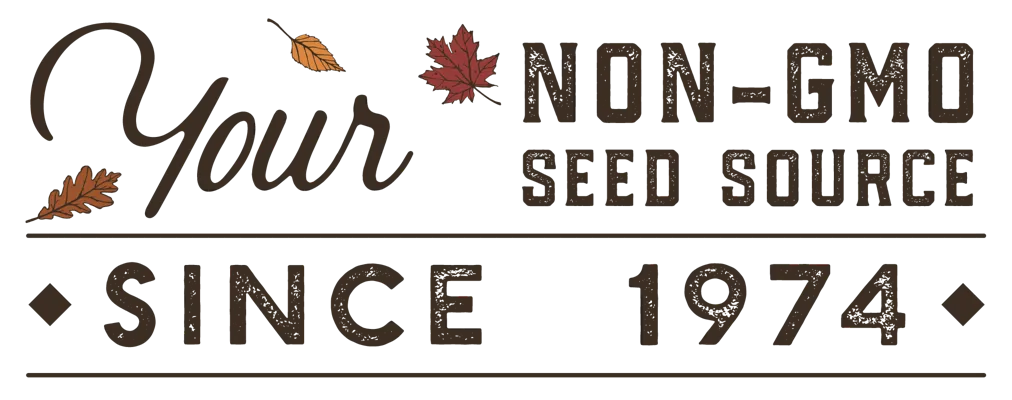Download Free Vegetable Growing Guide PDF
Growing Dae Jang Geum Korean Hybrid Melon in the Vegetable Garden
To grow Dae Jang Geum Hybrid Korean Melons, sow seeds directly into well-drained, fertile soil after the last frost date. Plant seeds at a depth of 0.5 to 1 inch. If you prefer to start indoors, sow seeds in biodegradable pots 2-4 weeks before transplanting. Melons are warm-season plants requiring 70 F or higher soil temperatures for optimal germination. Space plants 48-72 inches apart if growing in rows or 24-36 inches apart when using hills. For hills, plant 2-3 seeds per mound and thin to the strongest seedling once germinated. Rows should be 4-6 feet apart to allow for vine spread and proper air circulation.
Start with a balanced fertilizer when preparing the soil before planting. Once the plants are established and begin flowering, switch to a low-nitrogen fertilizer to encourage fruit development. Avoid excessive nitrogen as it promotes leafy growth over fruit production. Provide consistent moisture, especially during flowering and fruit development. Use drip irrigation or water at the base to avoid wetting foliage, which can lead to fungal diseases. Reduce watering as the fruits mature to enhance sweetness.
While melons naturally sprawl, using trellises or vertical supports can save space, improve air circulation, and reduce the risk of pests and diseases. Secure vines with soft ties and support the fruit with slings made of fabric or netting to prevent breakage.
Harvesting Dae Jang Geum Korean Hybrid Melon
Dae Jang Geum melons mature in about 65 days after planting. Harvest when the fruit turns bright yellow with distinct white sutures. The skin should develop a slightly waxy appearance, and the melon will emit a sweet fragrance near the blossom end. Use clean pruning shears or a sharp knife to cut the melon from the vine, leaving a small portion of the stem attached. Handle the fruit gently to avoid bruising, as it is delicate when ripe.
About Dae Jang Geum Korean Hybrid Melon Garden Seeds
The Dae Jang Geum melon is a modern hybrid developed from traditional Korean melons, commonly known as Chamoe. This variety is named after the famous historical figure Dae Jang Geum, a celebrated Korean royal physician known for her knowledge of herbs and nutrition.
Dae Jang Geum melons are prized in Korean culture, often grown in meticulously controlled greenhouse environments and even given as luxurious gifts.
They are a good source of vitamins A and C, antioxidants, and dietary fiber, which promote healthy skin, immune function, and digestion.
This melon is primarily enjoyed fresh. Its delicate sweetness and refreshing crunch make it perfect for snacking, fruit salads, or as a dessert ingredient.
Tips From Our Gardeners
"Imagine eating fresh cubes of this sweet fruit on a hot day while sipping an ice-cold beverage. It truly is luxury!"
 |
- Lara Wadsworth, True Leaf Market Writer
|
Other Resources
Dae Jang Geum Korean Hybrid Melon Seeds Per Package:
- 500 mg - Wholesale - Approximately 35 Seeds
- 1 oz - Wholesale - Approximately 2,100 Seeds
- 4 oz - Bulk Seeds - Approximately 8,400 Seeds
Non-GMO Dae Jang Geum Korean Hybrid Melon seeds are available for Fast Free Shipping on qualifying orders.
ATTRIBUTES
Basic Info
| Latin Name: |
Cucumis melo var. makuwa
|
| Melon Type: |
Asian - Different types of melons that are either varieties originating from or are very popular in one or more Asian countries. These may include cantaloupes, honeydew, pickling melons, and other Asian melon classes. Other - There are many categories of melons, and anything not included in one of the named categories here are included in 'other'. These include but aren't limited to Galia, Canary, Charentais, Winter, Piel de Sapo, Christmas melons, etc. |
| Dae Jang Geum Korean Hybrid Melon Color: |
Orange striped skin with orange flesh |
| Dae Jang Geum Korean Hybrid Melon Flavor: |
Mild, subtly sweet, and floral. |
Growing Info
| Hardiness Zone: |
4, 5, 6, 7, 8, 9, 10, 11, 12, 13 Annual Crop: Not Intended to Overwinter |
| Days to Maturity: |
65 |
| Days to Germination: |
5-10 |
| Seeding Depth: |
0.5-1 inch |
| Plant Spacing: |
48-72 inches or 2-3 plants per hill. |
| Row Spacing: |
4-6 Feet |
| Plant Height: |
12-15 inches |
| Growth Habit: |
Sprawled, Trailing Vine |
| Soil Preference: |
Melons prefer warm, well-draining but moist, nutrient-rich, loamy to sandy loam soil with a pH of 6.5 to 7.5. |
| Temperature Preference: |
Warmer (70-90 F). |
| Light Preference: |
Full Sun |
Other
| Direct Sow: |
Yes, direct sow 1-2 weeks after your last frost date. |
| Start Indoors: |
Yes. Melons may be started indoors 2-4 weeks before your last spring frost date. Wait to transplant them outdoors until at least 1 week after your last frost date as melons grow best with warm soil. Avoid leaving them in seed starting containers for long as melons are sensitive to transplanting. Harden off to reduce the effects of transplant shock. |
| Melon Pollination: |
Melons require insects, such as bees, for successful pollination. As monoecious plants they produce separate male and female flowers on the same plant. This means that not every flower will develop into fruit. We recommend growing an assortment of flowers near or throughout your garden to attract pollinators. |
| Plant Width: |
36-60 inches |
| Growth Speed: |
Early - Ready for harvest around 50-75 days. |
| Deer Resistant: |
No |
| Germination Temperature: |
70-95 F |
| Pests and Diseases: |
Resistant to Powdery Mildew (Race1) and Necrotic Spot Virus. Generally, melons are commonly susceptible to pest damage by aphids, cucumber beetles, squash bugs, cutworms, white flies, and melon worms. Look for signs of chewing, curling leaves, eggs on the undersides of leaves, and leaf discoloration. Melons are also susceptible to Powdery Mildew, Downy Mildew, and Fusarium Wilt, Anthracnose, and Bacterial Wilt. Maintain a regular watering schedule that avoids overly saturated soil. The roots need adequate time to air out between watering. This will also help prevent common fungal and bacterial diseases from developing. Good air circulation and applying water to the ground rather than the leaves will help maintain healthy bean plant growth. |
| Garden Size: |
Greenhouse, Garden Plot, Raised Bed |
| Melon Use: |
The fruit is perfect for eating fresh or adding to fruit salads. Its crisp texture and sweet flavor make it a refreshing treat. |
| Climate Tolerance: |
Heat |


















